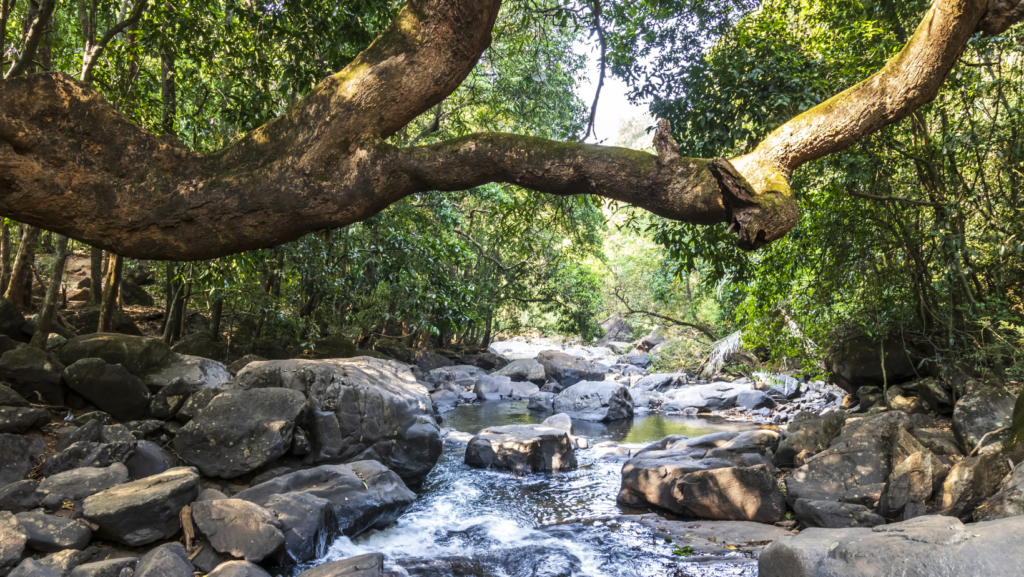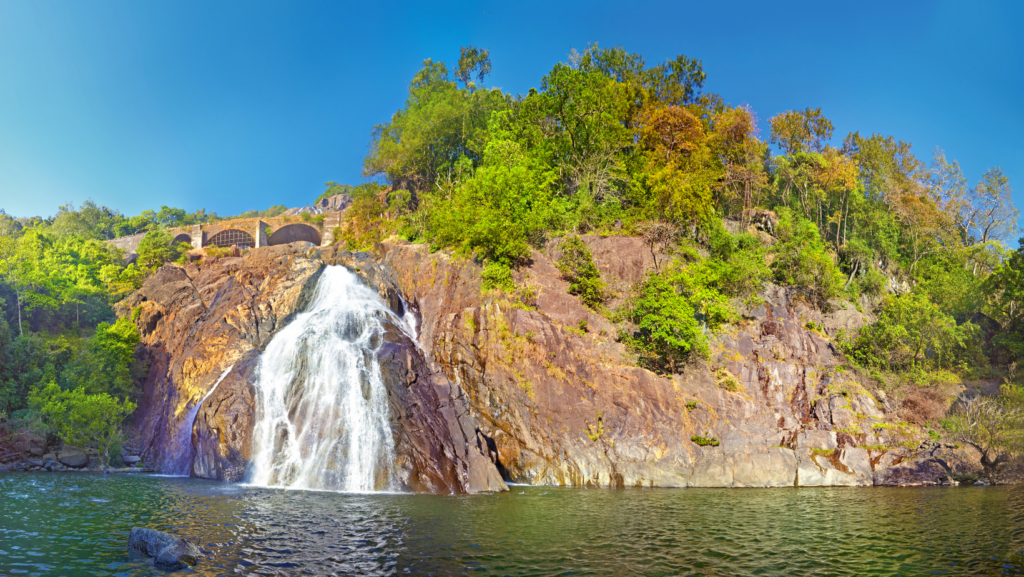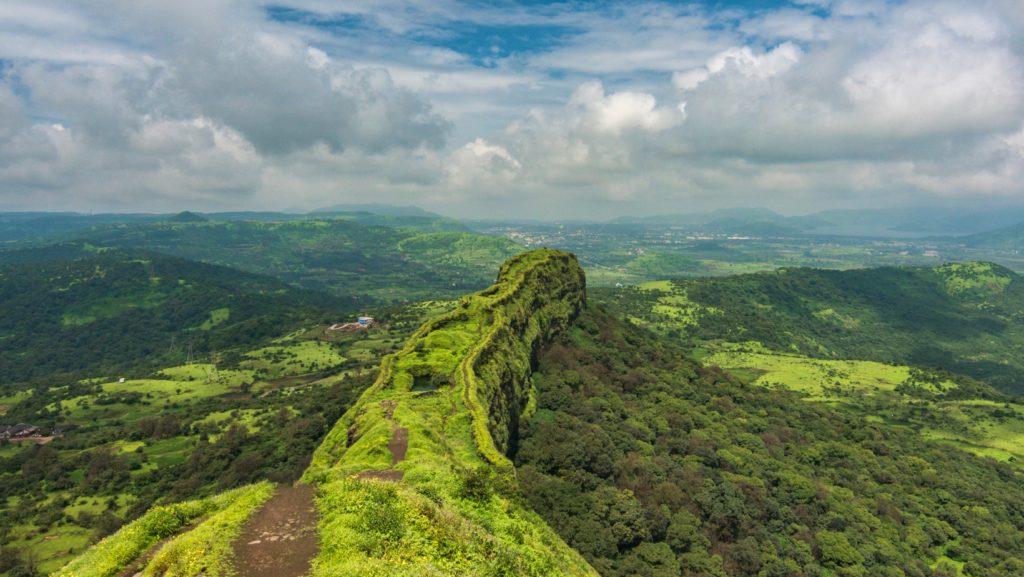Nestled along the western coast of India, the Western Ghats is an ancient mountain range, formed over 150 million years ago, is a UNESCO World Heritage Site and one of the world’s eight “hottest hotspots” of biological diversity. The Western Ghats offer travellers an unparalleled opportunity to immerse themselves in a landscape that is both geologically fascinating and ecologically diverse. From the towering peaks and deep valleys to the lush forests and cascading waterfalls, this region is a nature lover’s paradise.

The Western Ghats stretch for approximately 1600 kms from the Satpura Range in Gujarat to the very southern tip of India in Kerala. This mountain range is a result of the breaking up of the supercontinent Gondwana around 150 million years ago. The Western Ghats are known for their unique geological formations, including laterite plateaus, rock-cut caves, and stunning escarpments.

The range plays a crucial role in influencing the climate of the region. The Western Ghats act as a barrier to the monsoon winds, causing heavy rainfall on their western slopes and creating a rain shadow effect on the eastern side. This unique climate pattern has given rise to a wide array of ecosystems, from tropical wet evergreen forests to montane grasslands and shola forests.
The Western Ghats are also the source of numerous rivers that are the lifeline of the region. Major rivers like the Godavari, Krishna, and Kaveri originate in these mountains, providing water for millions of people and supporting agriculture and industry. The presence of numerous waterfalls, including the famous Jog Falls and Dudhsagar Falls, adds to the scenic beauty of the region.
The Western Ghats are renowned for their exceptional biodiversity, harbouring a wealth of flora and fauna that is found nowhere else on Earth. The region is home to over 5,000 species of flowering plants, 139 mammal species, 508 bird species, 179 amphibian species, and 288 freshwater fish species. Many of these species are endemic to the Western Ghats, meaning they are found nowhere else in the world.

The forests of the Western Ghats are a mosaic of different vegetation types, each with its own unique set of species. The tropical wet evergreen forests are home to a wide variety of trees, including the majestic Dipterocarpus indicus and the rare Myristica swamps. These forests also support a rich diversity of epiphytes, such as orchids and ferns, which adorn the branches of the trees.
The montane grasslands and shola forests, found at higher elevations, are a unique feature of the Western Ghats. The grasslands, known as “sky islands,” are home to several endemic species of plants and animals, such as the Nilgiri tahr, a rare mountain goat, and the Nilgiri pipit, a small passerine bird. The shola forests, characterized by their stunted trees and dense undergrowth, are a refuge for many endemic species of amphibians and reptiles.

The Western Ghats are also home to some of the world’s most iconic and endangered species. The region is one of the last remaining strongholds of the Bengal tiger, with several protected areas, such as the Bandipur and Nagarhole National Parks, dedicated to their conservation. Other notable species include the Asian elephant, the lion-tailed macaque, and the great hornbill.
In addition to terrestrial biodiversity, the Western Ghats also boast a rich diversity of aquatic life. The rivers and streams of the region are home to numerous species of freshwater fish, many of which are endemic and threatened. The Western Ghats are also home to several species of amphibians, including the purple frog, which was discovered only in 2003 and is considered a living fossil.

However, the biodiversity of the Western Ghats is under threat due to habitat loss, fragmentation, and degradation. The region has lost over 25% of its forest cover in the last century due to the expansion of agriculture, urbanization, and infrastructure development. The construction of dams and hydroelectric projects has also had a significant impact on the aquatic ecosystems of the region. Climate change poses another significant threat, with rising temperatures and changing rainfall patterns affecting the delicate balance of these ecosystems.
Conservation efforts are underway to protect the biodiversity of the Western Ghats. The Indian government has established several protected areas, including national parks, wildlife sanctuaries, and biosphere reserves, to safeguard the region’s flora and fauna. International organizations, such as the World Wildlife Fund and the International Union for Conservation of Nature, are also working with local communities and governments to promote sustainable development and conservation in the region.

Ecotourism has emerged as a potential tool for conservation in the Western Ghats. By providing alternative livelihoods for local communities and generating revenue for conservation efforts, ecotourism can help protect the region’s biodiversity while also promoting sustainable development. However, it is crucial that ecotourism is developed in a responsible and sustainable manner, with minimal impact on the environment and local communities.

The Western Ghats of India are a natural wonder that offers travellers a unique opportunity to explore a region of immense geological, geographical, and ecological significance. From the ancient rock formations to the diverse array of flora and fauna, the Western Ghats are a testament to the incredible diversity and resilience of life on Earth. It is essential to remember that the Western Ghats are not just a destination, but a living, breathing ecosystem that is vital to the well-being of millions of people and countless species. By promoting responsible tourism and supporting conservation efforts, we can help ensure that the Western Ghats continue to thrive for generations to come.

